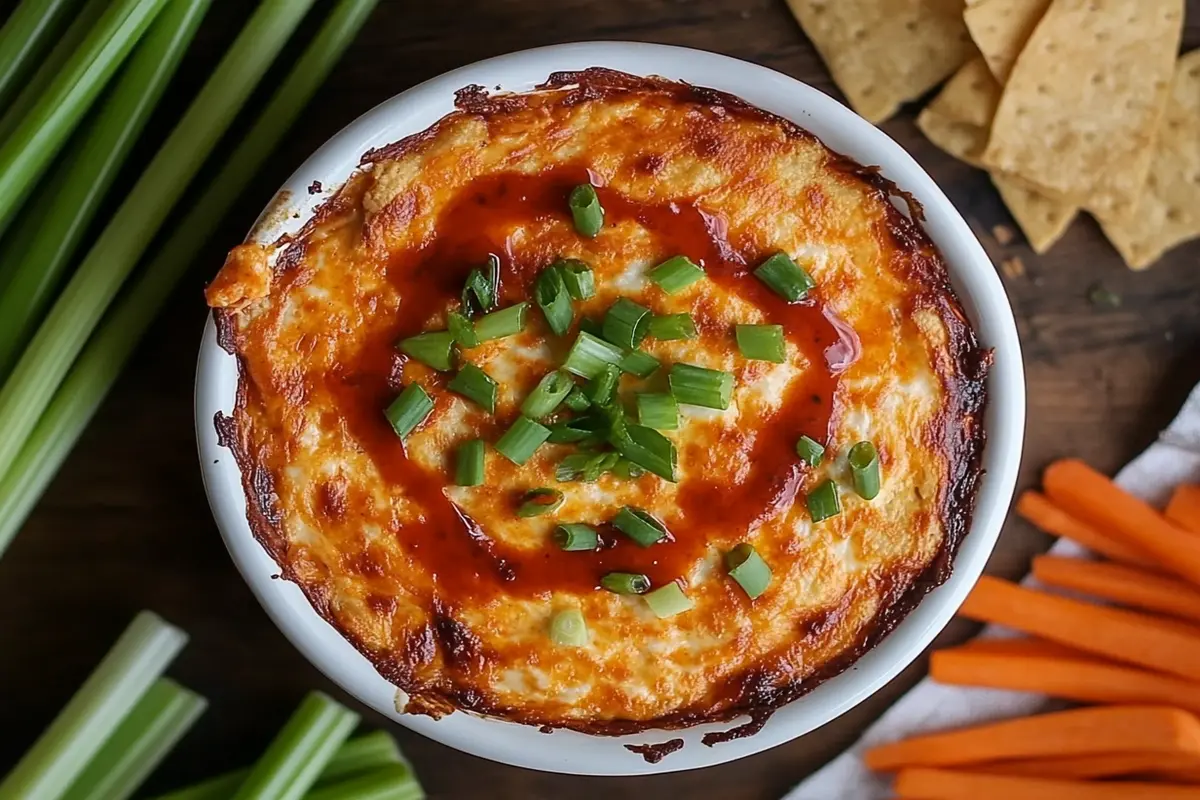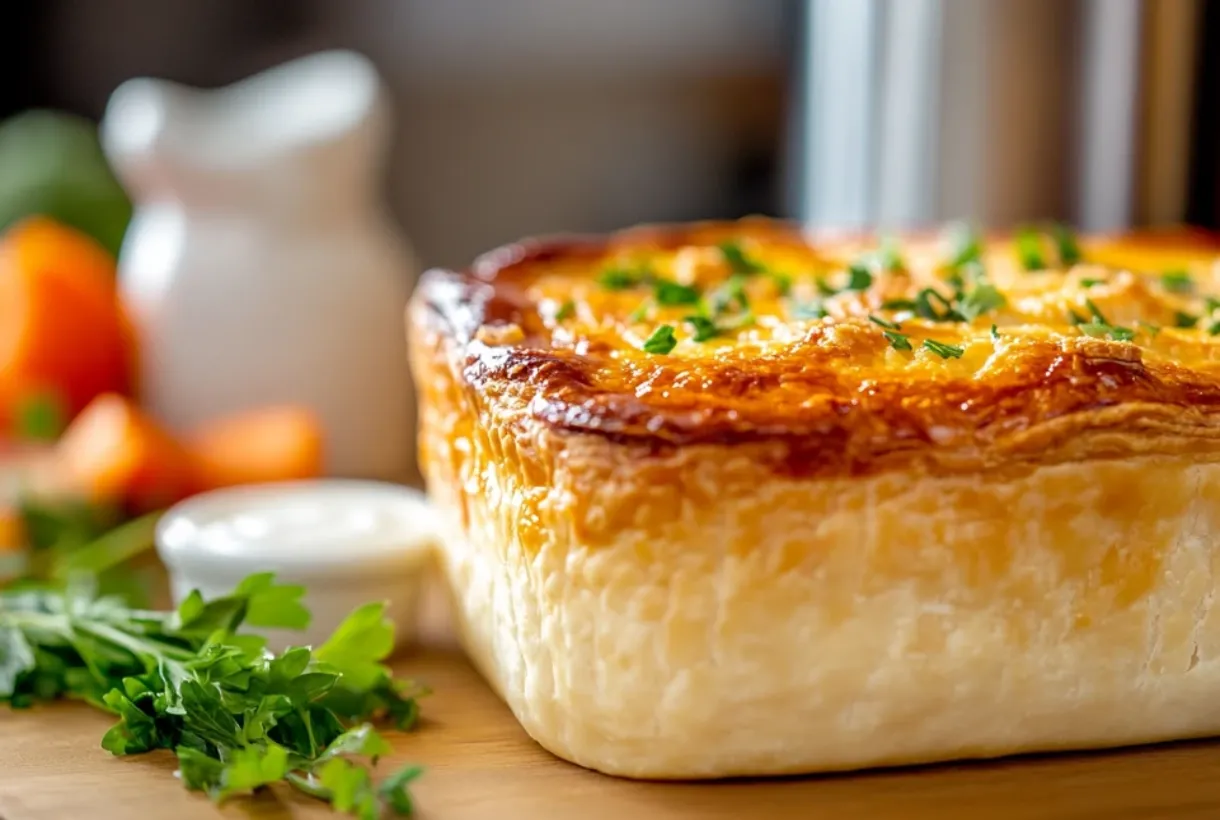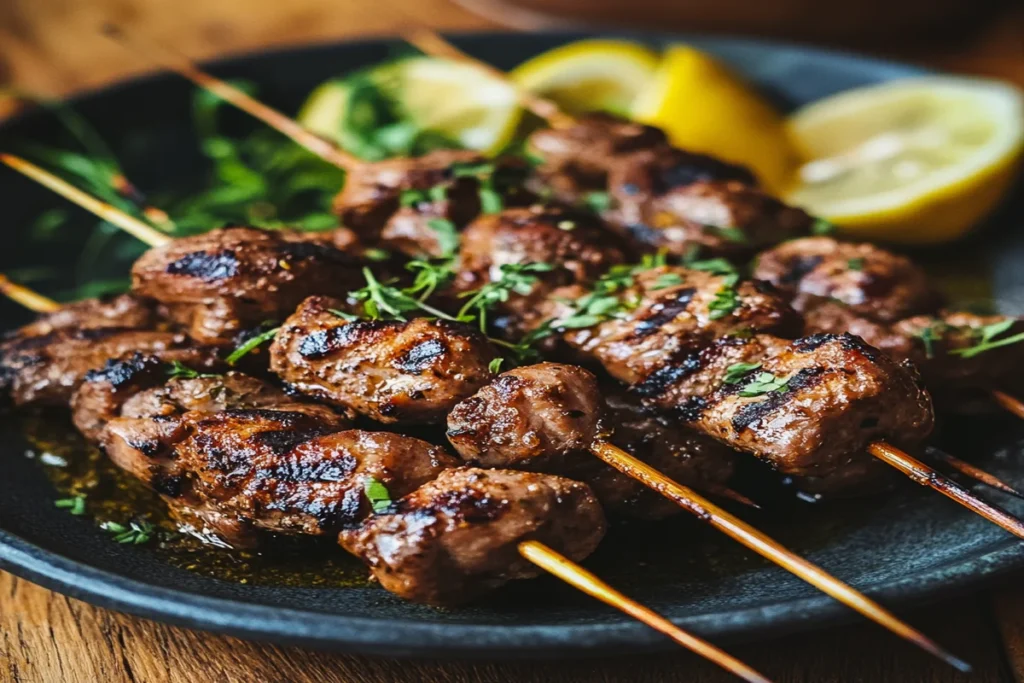
When it comes to offal, chicken hearts are often overlooked, yet they are a hidden gem in the culinary world. These small but mighty organ meats are packed with flavor, nutrients, and a delightful chewiness that can turn any dish into a savory experience. Across various cultures, from Japanese yakitori to Brazilian churrasco, chicken heart recipes hold a special place in traditional cooking.
In this article, we’ll take a deep dive into everything you need to know about chicken hearts—from their nutritional value and preparation methods to a variety of delicious recipes you can try at home. Whether you’re a first-time cook or an experienced chef looking to explore new flavors, you’ll find plenty of inspiration here.
Let’s begin by understanding the benefits and significance of incorporating chicken hearts into your diet.
Introduction to Chicken Hearts in Cuisine
Nutritional Benefits of Chicken Hearts
You might be surprised to learn that chicken hearts are a powerhouse of nutrition. These small organ meats are rich in protein, iron, zinc, and B vitamins, particularly B12, which is essential for energy production and red blood cell formation. If you’re looking for a nutrient-dense food that supports heart health and boosts immunity, chicken hearts are a fantastic choice.
What makes them even more appealing is their low-calorie, high-protein profile, making them ideal for those on keto, paleo, or high-protein diets. Additionally, they contain coenzyme Q10 (CoQ10), an antioxidant that promotes cardiovascular health and fights oxidative stress.
Unlike other organ meats, chicken hearts have a mild, slightly gamey taste, making them a great entry point for anyone new to offal. Plus, they’re easy to cook, absorbing flavors beautifully when marinated and seasoned.
Cultural Significance and Global Usage
From street food stalls in Asia to barbecue pits in South America, chicken hearts have found their way into the heart of many traditional dishes.
- In Japan, yakitori skewers often feature grilled chicken hearts, brushed with a sweet-savory glaze.
- Brazilian steakhouses serve them as a popular appetizer, seasoned simply with garlic, salt, and pepper.
- In Eastern Europe, they’re used in hearty stews and soups, adding richness to the broth.
- African and Middle Eastern cuisines incorporate them into spicy, aromatic dishes, often paired with rice or flatbread.
Their affordability and high nutritional value make chicken hearts a staple in many cultures, offering a cost-effective and delicious way to enjoy organ meats.
Continuing our exploration of chicken heart recipes, let’s delve into the essential steps for preparing these flavorful morsels and discover popular dishes from around the world.
Preparing Chicken Hearts for Cooking
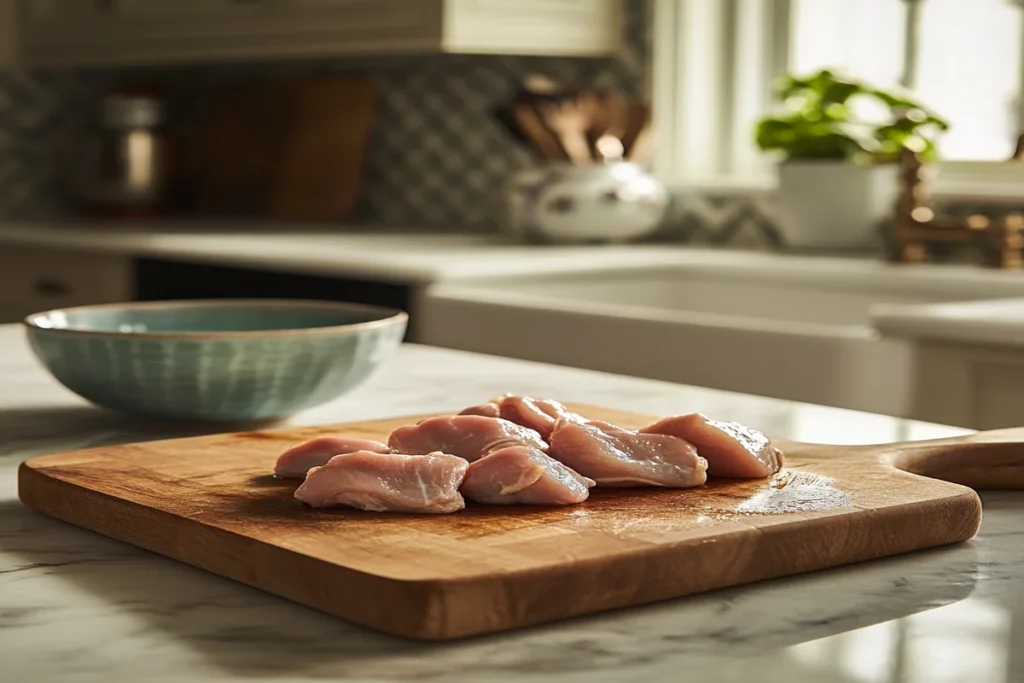
Selecting Fresh Chicken Hearts
Choosing fresh, high-quality chicken hearts is crucial for a delicious dish. Look for hearts that are firm, plump, and have a deep reddish-brown color. Avoid any with a grayish hue or unpleasant odor, as these may indicate spoilage. Whenever possible, purchase from reputable butchers or markets known for their fresh organ meats. If you’re new to sourcing offal, don’t hesitate to ask the vendor about the freshness and origin of the chicken hearts.
Cleaning and Trimming Techniques
Proper cleaning ensures that your chicken heart recipes are both tasty and safe to eat. Begin by rinsing the hearts under cold water to remove any residual blood. Next, use a sharp knife to trim away any visible fat, connective tissue, or blood vessels. Some prefer to slice the hearts in half to ensure thorough cleaning and to check for any clots inside. After cleaning, pat the hearts dry with paper towels; this helps them sear better during cooking.
Marinating Tips for Enhanced Flavor
Marinating chicken hearts can elevate their flavor and tenderize the meat. A simple marinade might include olive oil, minced garlic, lemon juice, and herbs like rosemary or thyme. For a spicier kick, consider adding chili flakes or smoked paprika. Place the cleaned hearts in a resealable bag or a shallow dish, pour the marinade over them, and ensure they’re evenly coated. Allow them to marinate in the refrigerator for at least 1-2 hours; however, marinating overnight can impart even more flavor. Remember to discard any leftover marinade that has been in contact with raw meat to prevent cross-contamination.
Popular Chicken Heart Recipes Around the World
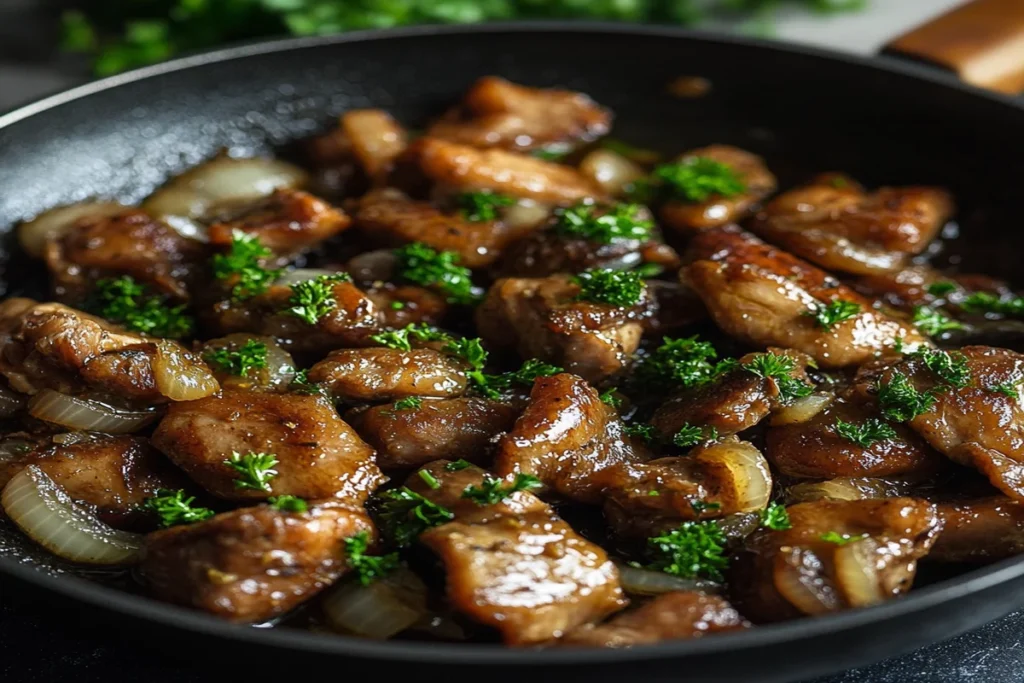
Chicken hearts are celebrated in various cuisines, each offering unique and delectable preparations. Here are some renowned dishes that showcase the versatility of this ingredient:
Sautéed Chicken Hearts with Garlic and Herbs
A simple yet flavorful dish, sautéed chicken hearts are cooked with minced garlic, fresh herbs, and a splash. The garlic infuses the hearts with a robust aroma, while herbs like parsley or oregano add freshness. This quick recipe highlights the natural taste of the hearts and pairs well with crusty bread or a side salad.
Grilled Chicken Heart Yakitori: A Japanese Delicacy
In Japan, chicken hearts are often prepared as yakitori—skewered and grilled over charcoal. The hearts are typically seasoned with salt or a tare sauce made from soy sauce, mirin, and sugar. Grilling imparts a smoky flavor, and the bite-sized pieces make for an enjoyable appetizer or snack. Serving them with a squeeze of lemon enhances their savory taste.
Brazilian-Style Pan-Fried Chicken Hearts
A favorite in Brazilian cuisine, especially during barbecues, chicken hearts are seasoned with simple spices like garlic, salt, and pepper, then pan-fried until crispy on the outside and tender inside. Often served as an appetizer, they’re enjoyed with a cold beverage and accompanied by farofa, a toasted cassava flour mixture.
Chicken Hearts with Mushrooms and Onions
This hearty dish combines chicken hearts with sautéed mushrooms and onions, creating a rich and savory meal. The earthiness of the mushrooms complements the meaty flavor of the hearts, while caramelized onions add a touch of sweetness. Simmering the mixture in a light broth can deepen the flavors, making it a comforting option for cooler days.
Crispy Fried Chicken Hearts: A Unique Appetizer
For a crunchy treat, chicken hearts can be breaded and deep-fried to golden perfection. Coating them in seasoned flour or breadcrumbs before frying adds a satisfying crunch, while keeping the interior juicy. Serving them with a dipping sauce, such as aioli or spicy ketchup, makes for an enticing appetizer that’s sure to intrigue guests.
By exploring these diverse chicken heart recipes, you can appreciate the global appeal and versatility of this often underutilized ingredient. Each preparation offers a distinct taste experience, inviting you to broaden your culinary horizons.
For a flavorful stir-fry experience, you might also enjoy our Garlic Chicken Stir Fry recipe.
Cooking Techniques and Tips for Tender Chicken Hearts Sautéing and Stir-Frying Methods
Sautéing and stir-frying are quick and effective methods to cook chicken hearts, preserving their tenderness and flavor. Begin by heating a small amount of oil in a pan over medium-high heat. Add the prepared chicken hearts and cook for about 5-7 minutes, stirring occasionally, until they are browned on the outside and cooked through. Incorporating aromatics like garlic, onions, or ginger can enhance the dish’s flavor profile. For a complete meal, consider adding vegetables such as bell peppers or snap peas during the stir-frying process.
Grilling and Skewering Techniques
Grilling imparts a smoky flavor to chicken hearts, making it a popular choice in various cuisines. To prepare, marinate the hearts as desired, then thread them onto skewers, ensuring even spacing for uniform cooking. Preheat the grill to medium-high heat and place the skewers directly over the flames. Grill for approximately 3-4 minutes per side, or until a slight char develops and the hearts are cooked to your liking. This method is ideal for outdoor gatherings and adds a delightful charred taste to the meat.
Deep-Frying for Crispiness
For those who enjoy a crispy texture, deep-frying chicken hearts is an excellent option. Start by coating the hearts in seasoned flour or a light batter. Heat oil in a deep fryer or heavy-bottomed pot to 350°F (175°C). Carefully lower the coated hearts into the hot oil and fry for 2-3 minutes, or until golden brown and crispy. Once done, remove them with a slotted spoon and drain on paper towels to remove excess oil. Serve immediately with your choice of dipping sauce for a satisfying appetizer or snack.
Frequently Asked Questions (FAQs) About Chicken Heart Recipes
What Do Chicken Hearts Taste Like?
Chicken hearts have a unique flavor that is both mild and slightly gamey. Their texture is tender yet firm, offering a pleasant bite. When cooked properly, they absorb marinades and seasonings well, making them versatile for various chicken heart recipes.
Where Can I Buy Chicken Hearts?
You can purchase chicken hearts at most butcher shops and well-stocked grocery stores. They are often found in the poultry section or at specialty meat counters. Additionally, international markets, particularly those catering to Asian or Latin American cuisines, frequently carry them. If unavailable locally, consider checking with online meat suppliers.
How Do I Clean and Prepare Chicken Hearts?
To prepare chicken hearts, rinse them under cold water to remove any residual blood. Trim away any visible fat, connective tissue, or blood vessels using a sharp knife. Some cooks prefer to slice the hearts in half to ensure thorough cleaning and to check for any clots inside. After cleaning, pat them dry with paper towels before proceeding with your chosen recipe.
Are Chicken Hearts Healthy to Eat?
Yes, chicken hearts are nutritious and offer several health benefits. They are rich in protein, iron, zinc, and B vitamins, particularly B12, which supports energy production and red blood cell formation. Additionally, they contain coenzyme Q10 (CoQ10), an antioxidant that promotes cardiovascular health. Incorporating chicken hearts into your diet can be a healthy choice when consumed in moderation as part of a balanced diet.
Conclusion – Embracing Chicken Hearts in Modern Cooking
Encouragement to Experiment with Chicken Heart Recipes
Cooking with chicken hearts may seem unusual at first, but their rich flavor, affordability, and health benefits make them an excellent ingredient to explore. Whether you prefer them grilled, sautéed, fried, or slow-cooked, they adapt well to various seasonings and culinary styles.
By trying different chicken heart recipes, you can enjoy nutrient-dense, flavorful meals while reducing food waste by using more parts of the chicken. Don’t be afraid to experiment—your next favorite dish might be one that features this underrated delicacy!
Final Thoughts on the Versatility of Chicken Hearts
From Japanese yakitori to Brazilian barbecue, chicken hearts are loved worldwide for their taste and texture. Their ability to absorb marinades and pair well with spices makes them ideal for diverse cooking techniques.
So, if you’re looking for an exciting, budget-friendly protein, give chicken heart recipes a try. You’ll discover new flavors, expand your culinary skills, and enjoy healthy, delicious meals at the same time!
Bonus Tips for Cooking Chicken Hearts Perfectly
Avoid Overcooking for the Best Texture
One of the most important things to remember when making chicken heart recipes is not to overcook them. Since they are small and lean, cooking them for too long can make them tough and chewy. Instead, cook them quickly over high heat or slowly at low temperatures to retain tenderness.
If grilling or sautéing, aim for 5-7 minutes of cooking time, depending on the heat. When simmering or slow-cooking, allow at least 30-40 minutes for the flavors to develop without making them rubbery.
Enhancing Flavor with the Right Seasonings
Since chicken hearts have a mild, slightly gamey taste, they benefit from bold seasonings. Marinades with soy sauce, garlic, lemon juice, or vinegar help tenderize them while adding depth of flavor. Spices like paprika, cumin, and black pepper can enhance their natural taste.
For a simple and tasty preparation, try tossing them with olive oil, salt, and chili flakes, then grill or pan-fry for a crispy exterior and juicy interior.
By following these tips, you’ll ensure that every dish you prepare using chicken heart recipes is tender, flavorful, and absolutely delicious!
Creative Ways to Serve Chicken Heart Recipes
Pairing Chicken Hearts with Sides and Sauces
No matter how you cook them, chicken heart recipes can be even more delicious when paired with the right sides and sauces. Because they have a rich, slightly gamey flavor, they balance well with bright, acidic ingredients and hearty sides.
For a light meal, serve grilled or sautéed chicken hearts with a fresh salad, roasted vegetables, or a citrus-infused dressing. Want something heartier? Pair them with rice, mashed potatoes, or buttery garlic bread to soak up the delicious juices.
For sauces, garlic butter, chimichurri, or a spicy tomato salsa complement the deep flavor of chicken hearts. A simple squeeze of lemon or a splash of vinegar before serving can enhance their taste even more.
Incorporating Chicken Hearts into Everyday Meals
If you’re looking to add chicken hearts to your regular meals, try using them in stews, pasta dishes, and stir-fries. They work well in spicy curries, slow-cooked soups, and even tacos.
Chopped or sliced, they can replace regular chicken meat in many traditional recipes, offering a bolder taste and more nutrients. Adding them to a hearty risotto or fried rice gives an exciting twist to familiar comfort food.
By thinking outside the box, you can enjoy chicken heart recipes in new, creative ways, making them a regular part of your cooking routine!
Sustainability and Ethical Eating with Chicken Hearts
Reducing Food Waste by Using Organ Meats
One of the best reasons to explore chicken heart recipes is that they support sustainable eating. Organ meats like chicken hearts are often discarded, despite being nutritious and flavorful. Using them in cooking reduces food waste and makes the most of every part of the animal.
Compared to traditional cuts of meat, chicken hearts are also more affordable and available in bulk. Choosing them over premium cuts can help save money while enjoying a high-protein, iron-rich food source.
Ethical Sourcing of Chicken Hearts
When buying chicken hearts, it’s best to choose organic or pasture-raised poultry whenever possible. These options ensure that the animals were raised in better conditions, with fewer antibiotics and a more natural diet.
Supporting local farmers or ethical butchers is another great way to make more conscious choices. Many specialty markets offer higher-quality organ meats, which can improve the taste and nutritional value of your dishes.
By including chicken hearts in your meals, you’re not just trying a new ingredient—you’re making a sustainable, ethical choice that benefits both your health and the environment.
